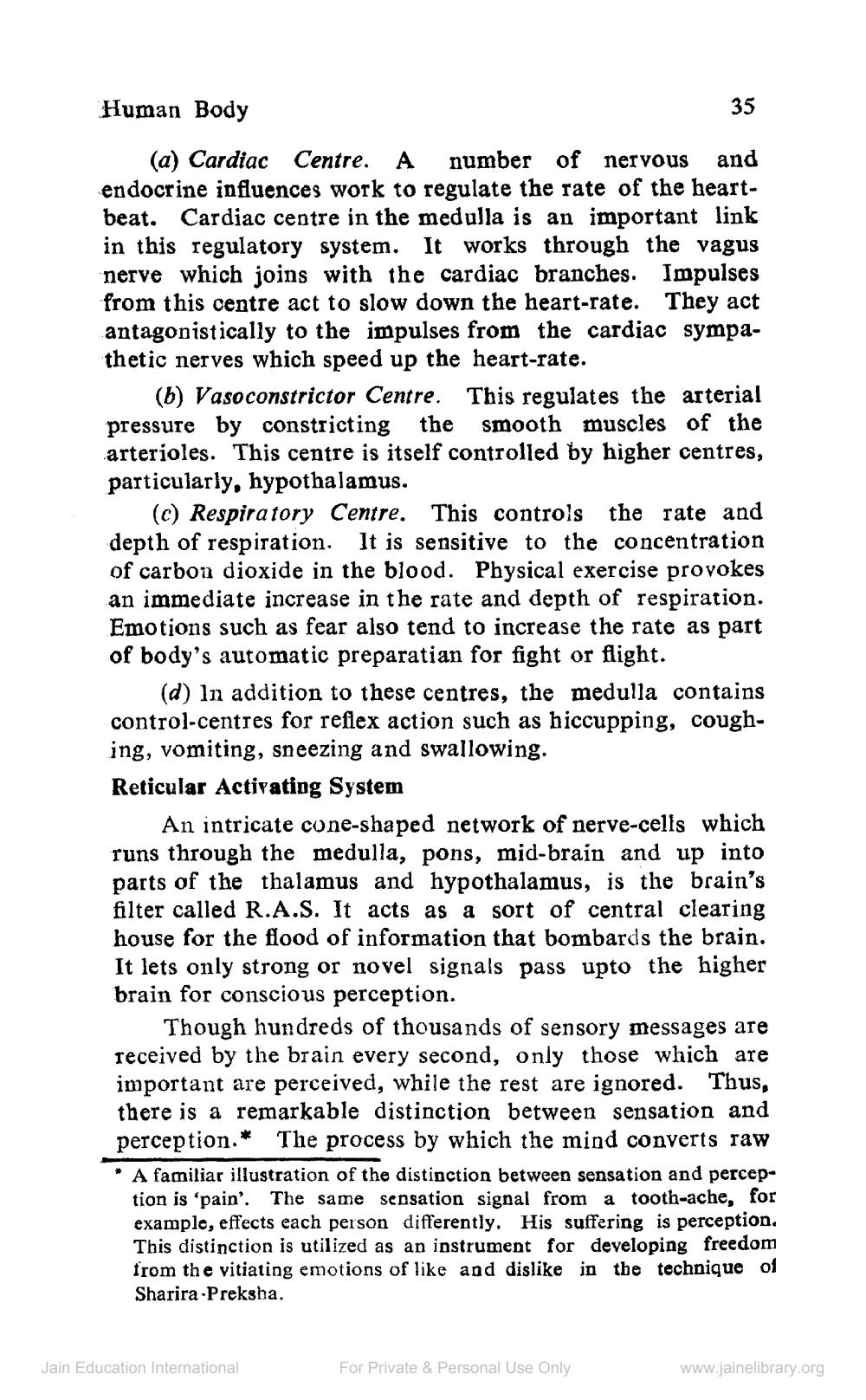________________
Human Body
35
(a) Cardiac Centre. A number of nervous and endocrine influences work to regulate the rate of the heartbeat. Cardiac centre in the medulla is an important link in this regulatory system. It works through the vagus nerve which joins with the cardiac branches. Impulses from this centre act to slow down the heart-rate. They act antagonistically to the impulses from the cardiac sympathetic nerves which speed up the heart-rate.
(b) Vasoconstrictor Centre. This regulates the arterial pressure by constricting the smooth muscles of the arterioles. This centre is itself controlled by higher centres, particularly, hypothalamus.
(c) Respiratory Centre. This controls the rate and depth of respiration. It is sensitive to the concentration of carbon dioxide in the blood. Physical exercise provokes an immediate increase in the rate and depth of respiration. Emotions such as fear also tend to increase the rate as part of body's automatic preparatian for fight or flight.
(d) In addition to these centres, the medulla contains control-centres for reflex action such as hiccupping, coughing, vomiting, sneezing and swallowing. Reticular Activating System
An intricate cone-shaped network of nerve-cells which runs through the medulla, pons, mid-brain and up into parts of the thalamus and hypothalamus, is the brain's filter called R.A.S. It acts as a sort of central clearing house for the flood of information that bombards the brain. It lets only strong or novel signals pass upto the higher brain for conscious perception.
Though hundreds of thousands of sensory messages are received by the brain every second, only those which are important are perceived, while the rest are ignored. Thus, there is a remarkable distinction between sensation and perception.* The process by which the mind converts raw * A familiar illustration of the distinction between sensation and percep
is ‘pain'. The same sensation signal from a tooth-ache, for example, effects each person differently. His suffering is perception. This distinction is utilized as an instrument for developing freedom from the vitiating emotions of like and dislike in the technique of Sharira-Preksha.
Jain Education International
For Private & Personal Use Only
www.jainelibrary.org




